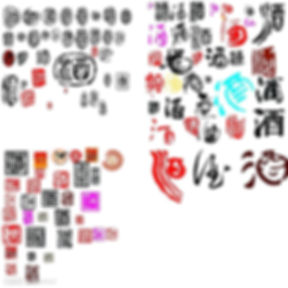2017 Wine Futures To Watch

The price is the eternal question that dominates every Wine Futures campaign, and that holds true also for vintage 2017. Price for 2017 conditions by low production. Volume for 2017 is down significantly as general rates are reported to rise 20% to 30% compared to 2016 referencing exchange and actual increment. Some chateaux report volume down by 40%, and indeed some say they did not produce any at all. Some lucky ones(Boaurd et al gives argument for 2017 over 2014, for example; also Mouiex) are getting better quality surpassing that of 2014, and with even better volume, hence there are forces for maintaining and going beyond.

Back to the quality of 2017. How do the 2017 Bordeaux Wine Future taste? Our first cut is as follows.
2017 is an oceanic vintage( worst frost since 1991, uneven rain and heat, etc.). On the palate, the wines are surprisingly sweetish which makes some wines very pleasant wines to drink, even when young. It comes not from high alcoholic levels because the ABV is generally from low 12.5 to 13.5%. It comes not from the pH higher because the reading is just average. But there is only a slight summer drought, as in 2016. Mid-palate is relatively weak; finish is slightly shorter because of the lack of heat felt during July and September summer (true for July and September but not for August. There is, as JM Quarin says, someof the 2017 'a difficult balance to find with the press wine', hence there is some lack of balance.
It gives some nice surprise though. Some wines are well structured in the mid-palate and in the finish and even better than 2014! Quarin reasons that 2017 as an early vintage gives high-quality dryness of the winter, an even flowering, mild summer drought, the durable water stress, especially on old ripening soils and finally in the work of men. Really, Anson gives another set of similar reasons.
There are reported good wines(Wine Spectator mentions some chateaux from St Julien, Pauillac and St. Emilion; Neal Martin writes about some Pomerols)The best structures are all more elongated than full, somewhat aromatic, very fruity, melting and with flesh, but without too much power. Fresh summer fruit( for example, Guiraud Sauternes and its simple G de Guiraud), and long, well-balanced tannins, some wines we tasted were almost Burgundian in style. The red wines gives vividly bright colours. The noses are very fruity, precise, quite often pure, without crudity and complicated when it comes to the best wines. 2017 benefits medium ageing. Already it perfectly suits the growths used to this style. The best wines stretch in the finish and mainly rely on the success of the Cabernet franc, the Cabernet Sauvignon and Petit Verdot.

So 2017 is a mix bag. Quite, unlike 2016 skewing towards Sauternes and other Left Banks, 2015 more balanced, 2014 intense, 2012 for freshness, 2011 for classicism, 2010 for to keep, 2009 for elegance, 2008 for Merlot ripeness, etc. Market reactions that concern end- consumers are varied and a no-strategy remains an appropriate strategy. Why? Let's review based on strategies of Liv-rex .
First. If wine critics deem the 2017s to be below average, the chateaux will want to sell as much stock now at the highest possible price, which could leave either négociants or international merchants with earlier wine stock they are unable to sell. That's a mixed blessing for the end consumers because consumers may not buy a so-so 2017 wine even though that 2017 is cheap. So, our advice is, taste if you can, read and think, compare price and quality of your specific items from 2016, 2015 and 2017 three years in a roll.
For the wine deemed to be above average, it’s likely that merchants might struggle to get their hands on the stock that is being withheld to sell in the future for a higher price. If those are wines have stylistics that some end-consumer happen to fancy, we venture to say that it is the time to buy now before their costs are going up again.
The excellent middle way must surely be for the châteaux to, at least for this campaign, ease up on their current retention policies, release as much stock as possible which would allow them to make a token but essential gesture to the market at large by being seen to reduce prices on the 2016s. We suggest that for the end-consumer, the wisdom is to buy 2016, not 2017. Afterall, money cost for keeping 2015 is becoming significant. .

So, wait until the 2017 wine future is in full swing. WE say that because we are going through the initial stage of 2017 release, the long-term impact on the market is not entirely clear. On the one hand, the current purchases from wine merchants may reflect their f a regular restocking cycle. It is also likely that the restricting supply from chateaux and courtier is intended to help maintain price levels.
Did we feel the heat of the 2017 campaign? No apparently.The market has made some noise and made steady progress in 2017(as it does for every year)but is already showing signs of slowing down. To continue with overpriced items in the 2017 campaign with suppressed volumes could negatively affect sentiment. We hope not.

We conclude with a cliche.
How accurate is the French saying there are only good bottles of wine and not good wines? That being great wisdom, 2017 is another unique vintage in that sense. Indeed 2017 was complicated, but there are some excellent wines. Expect plenty of freshness and drinkability from wines that will offer excellent value and others that will rival 2016 regarding ripeness and ageability. But they are likely to be the exception, not the rule. Careful selection is key. Choose, study, understand and taste of you can. Let buyers beware.






















